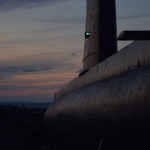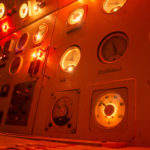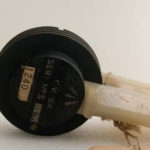Before being awarded a Nobel Prize, Patrick Blackett was a pioneer in the use of extensive data analysis, error bounding, and probability theory of anecdote-based tactics, as he devised improved strategies against deadly German submarines.
This last part of this article looks at a World War II operation unrelated to Blackett’s work, but which used similar expertise and skill set to formulate an approach based on careful, intense, yet questioning the use of available data. It involves a critical, easily expressed question of where to add armor to airplanes so they will be most likely to survive, given the limited amount (weight), which can be added, for obvious reasons. Where will the added armor provide the greatest return, so the planes will more likely survive attacks by antiaircraft rounds and make it back to safety? What’s the “right” amount of armor in the tradeoff among the factors such as performance penalty (range, maneuverability, speed) due to added armor, survivability, and payload, to cite a few?
The problem was addressed by the Statistical Research Group (SRG), a classified program where mathematicians and statisticians were employed to assist in the war effort. The SRG was in the Manhattan borough of New York City, in the Morningside Heights neighborhood just a block away from Columbia University. The experts worked on projects such as calculating optimum trajectories for aircraft to minimize fuel consumption or maximize the effectiveness of approach patterns, improve aiming trajectories, and even how to “mix and match” ammunition rounds for enhanced results.
Among its key members was Abraham Wald, a war refugee born in a part of what was the Austrian-Hungarian Empire and who had exhibited a major talent for math at an early age. Before the war, he was working in Austria but had to flee the Nazis, making his way to the United States.
The limited data set he had to work with was from planes which made it back to base and showed where they had been hit (Figure 1). The conventional thinking was to add armor to the planes where the highest density of hits was registered – the fuselage, followed by the fuel system. The reasoning was that that the additional armor in these places would stop more bullets, relatively speaking.

But Wald pointed out that they had little solid data on where the planes which never made it back were hit. The data shows where planes could be hit and keep flying because the aircraft and crew had survived the antiaircraft rounds. Everyone recognized that there was both intentional and unintentional bias in the data set, but the issue was what to do about it and how to use it still, as that was all they had.
It’s easy to say the “correct” answer is to protect the more vulnerable parts of the aircraft, and part of the problem is determining exactly which those are and to what extent to armor them. Some stories about Wald’s efforts oversimplify his results by saying he told the military to armor the parts with the fewest holes since the planes survived despite some parts having more damage.
As is often the case, the truth is much more complicated. What Walk and the SRG did was devise highly statistical methods for estimating the vulnerability of various aircraft parts and use these results to guide armoring decisions. For good general discussions of Wald’s efforts, see References 9 and 10; for a much more mathematical and detailed explanation which clarifies (and debunks) the simplistic “myths” and includes equations, graphs, and additional references, see Reference 11.
Conclusion
Collecting and analyzing data is an essential step in understanding and then improving a process, that’s not news. But it’s also important to ask what the data shows, what it doesn’t show, what it can’t show, what parts of it are credible and to what extent, what might be missing, and why. The story of Blackett and Wald during WWII provides clear, informative examples of clarifying, and then using suspect or incomplete data to lead to legitimate, beneficial, and supportable conclusions.
References
- The Noble Prize, “Patrick M.S. Blackett – Facts“
- John Terraine, “The U-Boat Wars: 1916-1945,” G.P. Putnam’s Sons, 1989.
- Stephen Budiansky, “Blackett’s War: The Men Who Defeated the Nazi U-Boats and Brought Science to the Art of Warfare,” Alfred A. Knopf, 2013.
- May Jo Nye, “Blackett: Physics, War, and Politics in the Twentieth Century,” Harvard University Press, 2004.
- Paul M Kennedy, “Engineers of victory: the problem solvers who turned the tide in the Second World War,” Random House, 2013.
- Donald G. F. W.Macintyre, “U-Boat Killer: Fighting the U-Boats in the Battle of the Atlantic,” Rigel Press, 2004.
- Robert Buderi, “The Invention that Changed the World: How a Small Group of Radar Pioneers Won the Second World War and Launched a Technological Revolution,” Simon & Schuster, 1998.
- Royal Air Force Museum, “RADAR – The Battle Winner?”
- We Are the Mighty, “The mathematician who saved hundreds of flight crews”
- Medium, “Abraham Wald and the Missing Bullet Holes” (an excerpt from “How Not To Be Wrong” by Jordan Ellenberg)
- American Mathematical Society, “The Legend of Abraham Wald”






